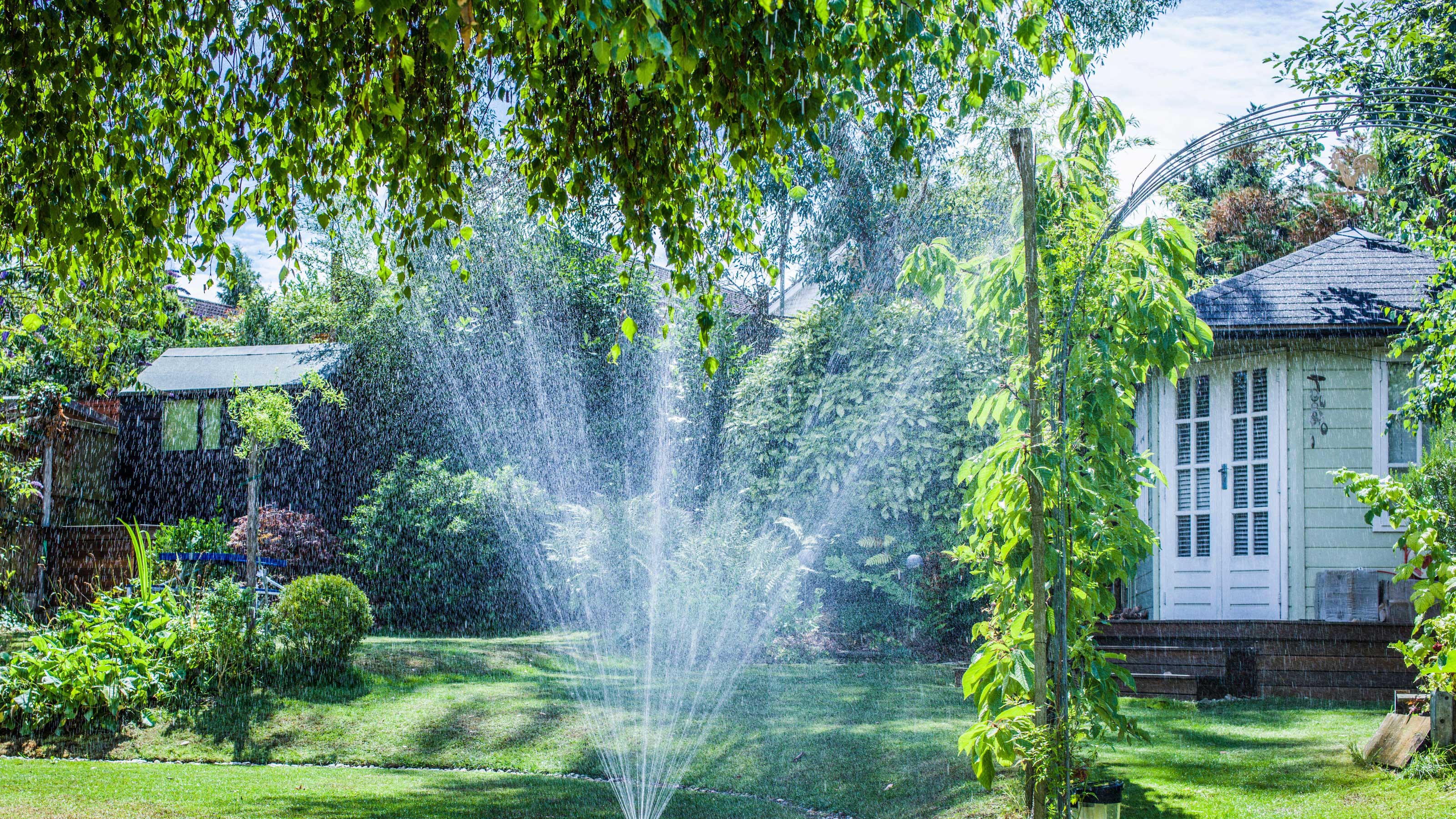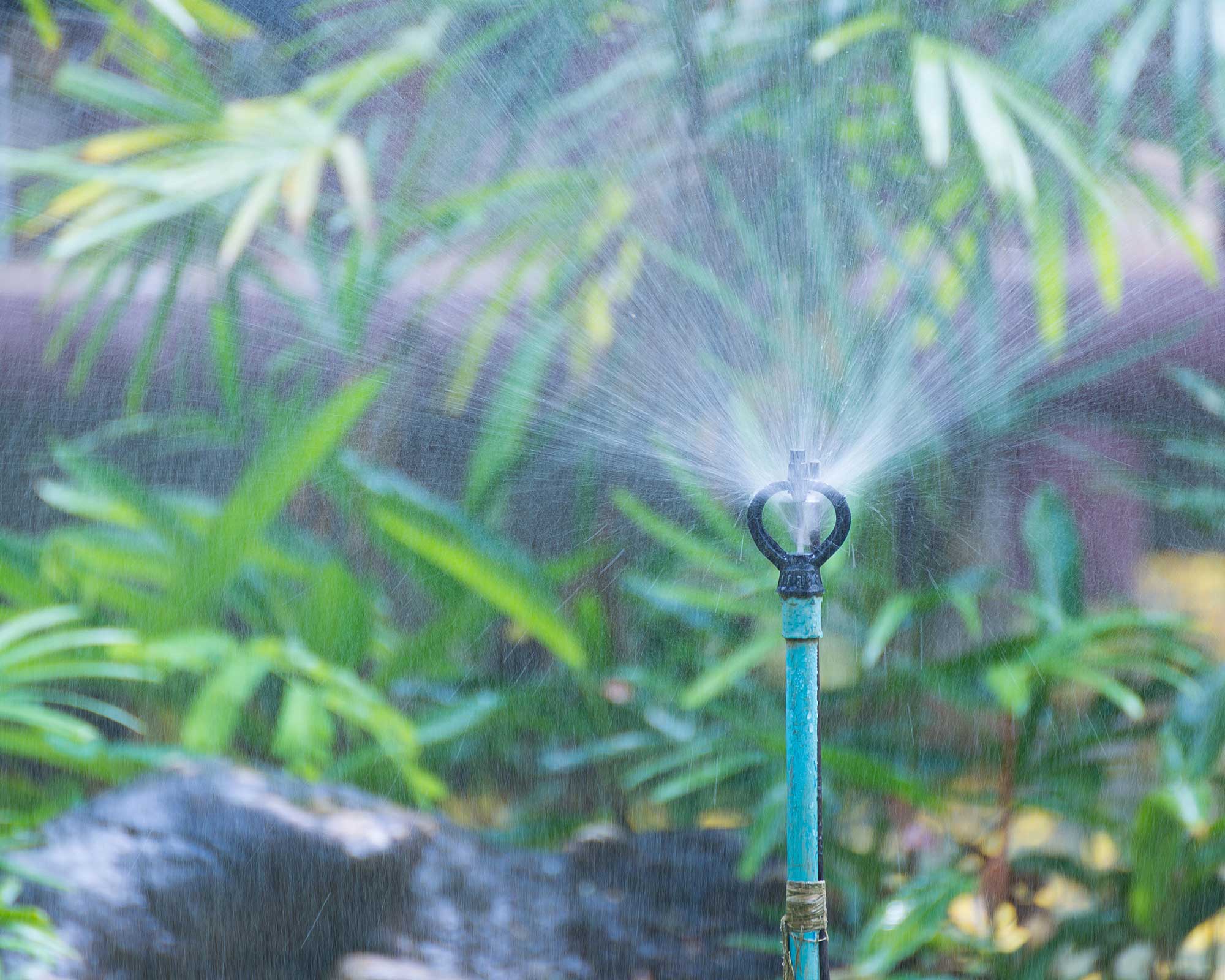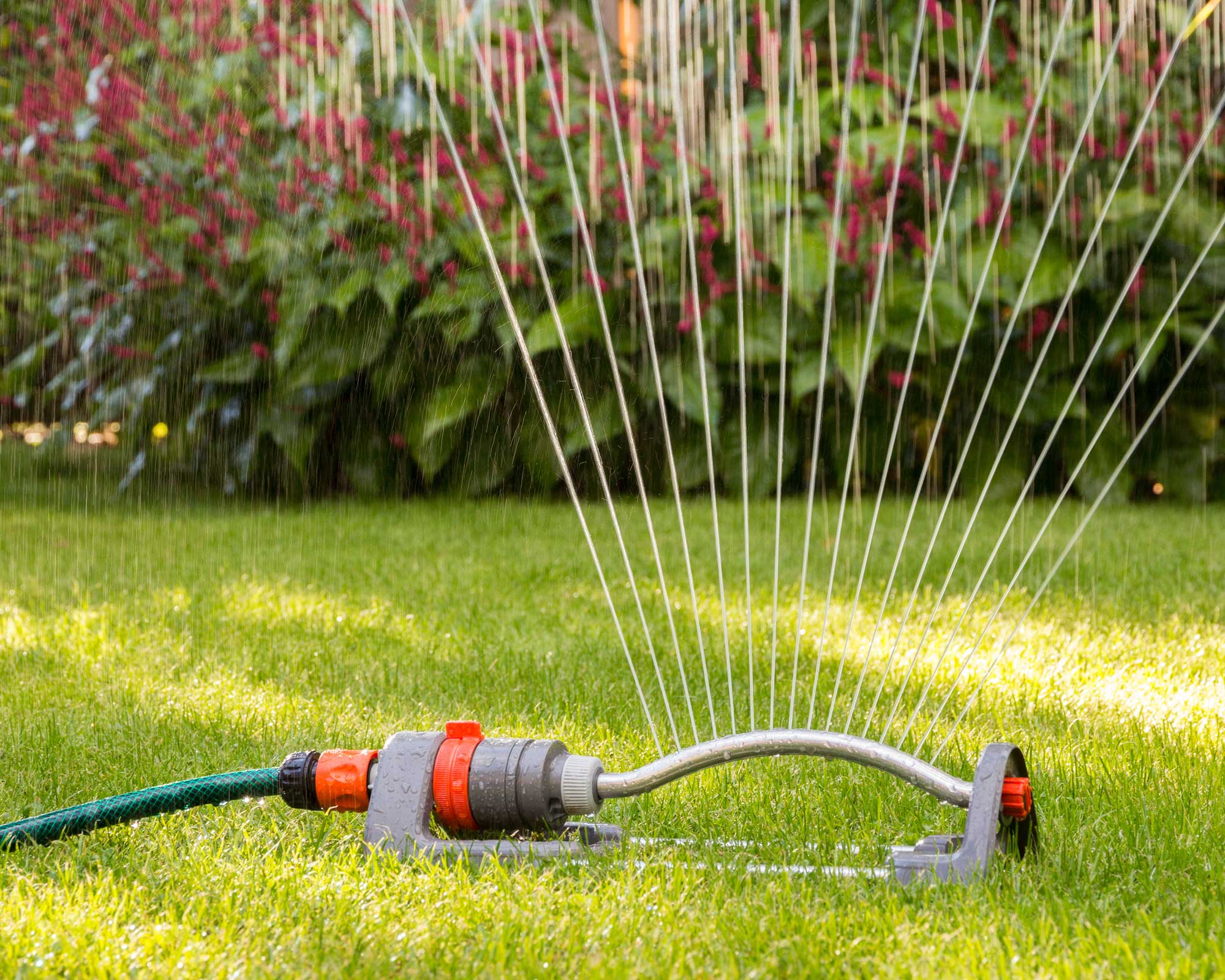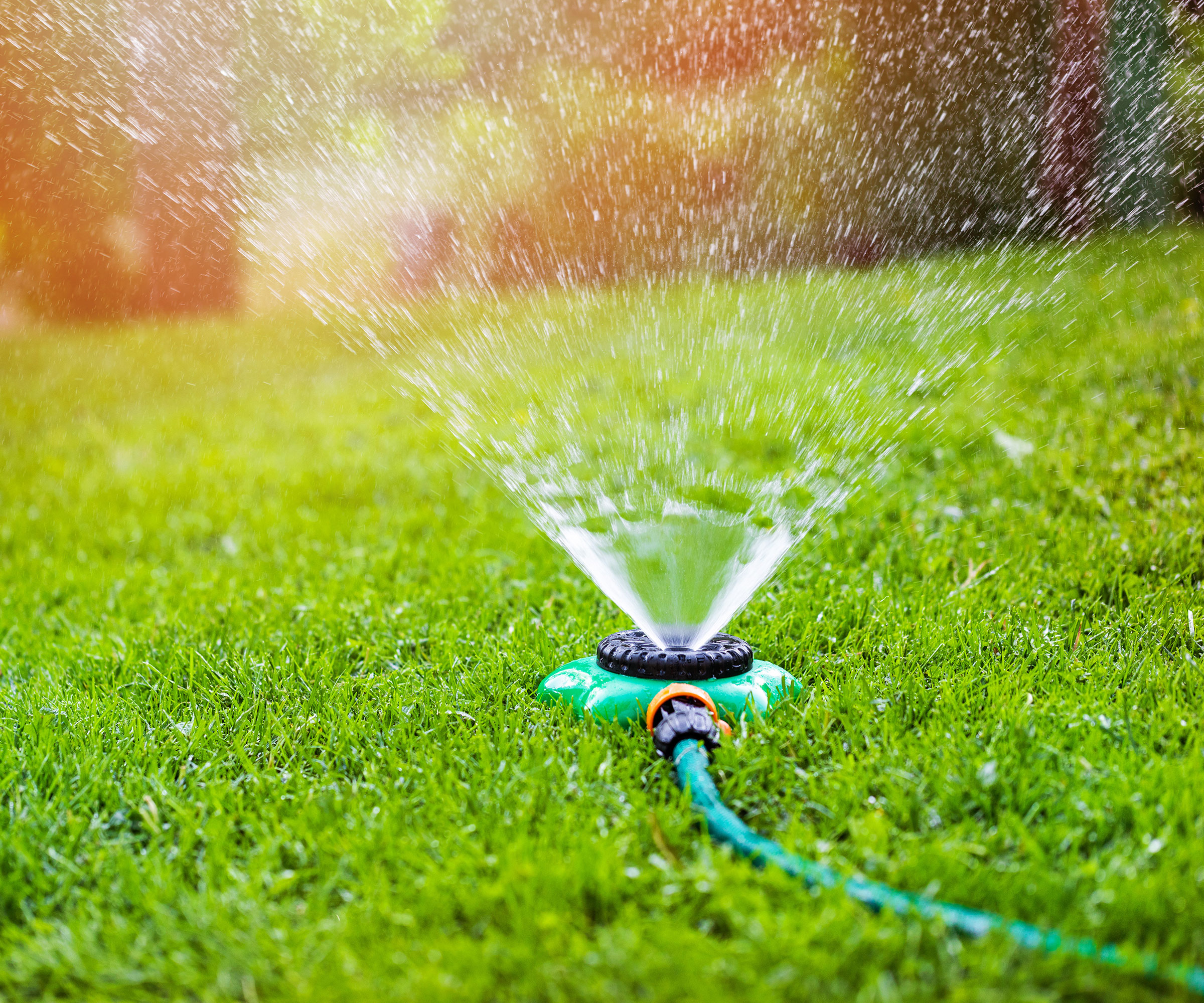
Watering the yard properly is an essential step in summer to make sure that everything grows and flourishes correctly. With the heat constantly rising it is more important than ever to understand how to water your yard effectively.
During times of significant heat, it is essential to protect your plants in a heatwave and keep your lawn growing in hot weather. Knowing when to water your plants and when to water your lawn can make a huge difference to how your yard will survive the extreme heatwave.
A key part of this is understanding just how long to water for, as overwatering and underwatering are very easy mistakes to make. To achieve a healthy yard it is crucial to strike the right balance.
Experts share their advice, about how long you should water your yard with a sprinkler
The average watering time is 20 minutes, however, according to our experts, it will depend on a number of factors if you want to do it properly.

It depends on the types of plants and grass
How long you water your yard with a sprinkler is down to many different variables, the first one is your plants' and grasses' needs. Different plants and lawns have varying water requirements, for example, drought-resistant or native plants may need less frequent watering, while thirsty vegetable and flowering plants may require more regular watering.
For newly planted or transplanted seedlings, in a raised flower or vegetable bed, these may require shorter but more frequent watering cycles, in order to help them establish their root systems. Zahid Adnan, gardener and founder of The Plant Bible says that it is good to water seedlings for about 10 to 15 minutes in their infancy stage.
Zahid Adnan also suggests that for more established yards, watering time will increase slightly to around 20 to 30 minutes two to three times a week. However, it is always best to monitor your garden and adjust based on how your plants look.
When it comes to the lawn, it is down to a combination of how thirsty your lawn looks – if it has started to brown, increase your watering time by 10 minutes – and how thick your grass is – if you have a thicker variety of grass, increase watering time by 5 minutes.
Check your soil type

Soil type is another important factor at play when you are trying to determine how long you should water your yard. It is often overlooked how much of a key role your soil can play when it comes to the length of watering.
Sandy soil drains water quickly, while clay soil tends to retain water for a longer period of time. Tony O’Neil, gardener and owner of Simplify Gardening, suggests that if you have sandy soil you should water more frequently but for shorter periods. On the other hand, if you have clay soil, it is best to water for longer periods but less frequently.
As a guide, water sandy soil for 10 to 15 minutes and clay soil for 20-30 minutes with your sprinkler on a low setting so that there is no root damage due to high pressure.
A good habit to get into is before your planned watering session, to use a towel or soil probe to check the moisture level in the root zone. If the soil is moist to the desired depth stop watering.
‘Monitoring your plants and soil is key, signs of overwatering can include yellowing leaves and a soggy soil surface, while underwatering can lead to wilted or brown leaves’ says Tony.
Consider temperature

Specific weather conditions play a huge part in how frequently you should be watering your yard. During hot and dry periods, plants need more water. Conversely in the cooler months and the wetter seasons they tend to require less.
You should always adjust your watering schedule depending on the weather conditions. This ensures that you are meeting the plants' liquid needs without overwatering which can be detrimental.
Bryan Clayton, gardener and owner of Your Green Pal warns that it is always good to be on weather watch and to keep an eye on the rainfall: ‘If mother nature is doing the job for you, give your sprinkler a break.’
The time of day that you choose to water also has a part to play. Watering in the early morning and late afternoon reduces the chance of all your watering being lost as evaporation. If you are watering your yard in the middle of the day, the likelihood of giving the water to the atmosphere is pretty high.
It depends on the type of sprinkler you use
Lastly, the type of sprinkler you are using to water your yard can affect how often you will need to water.
The main reason to choose to water with a sprinkler over a hose is to distribute water evenly across the area you are watering, uneven watering can lead to underwatering in some areas and overwatering in others. If you pick the right sprinkler, and ensure that your sprinkler system is functioning properly, watering this way can achieve better results.
According to Liz Will, master gardener and garden coach, pulsating sprinklers work the best and are the most effective. ‘These sprinklers send out a jet of water, which rotate in a circular pattern,’ she says. These types of sprinklers work particularly well in large areas and they are less likely to clog and form pits of water.
If you are looking to upgrade your water sprinkler this summer, why not look into getting a high-efficiency sprinkler, available from Amazon? They deliver water but more efficiently by having multiple rotating streams of water which is great for your lawn and your plants. They also reduce your water bill too, so a win in all areas.
How long does it take to water a lawn with a sprinkler?
Water an area of grass for no longer than 20-30 minutes depending on varying factors. After 20-30 minutes, stop watering and allow the water to soak into the soil.
Remember, the best practice is to observe your garden regularly, paying attention to the condition of the plants and the moisture level in the soil. Your yard will provide visual cues if they are under or overwatered, and you can always make adjustments to your watering schedule accordingly.







